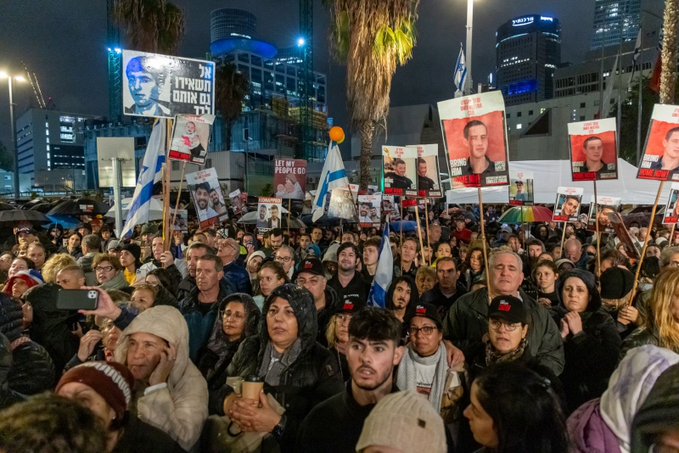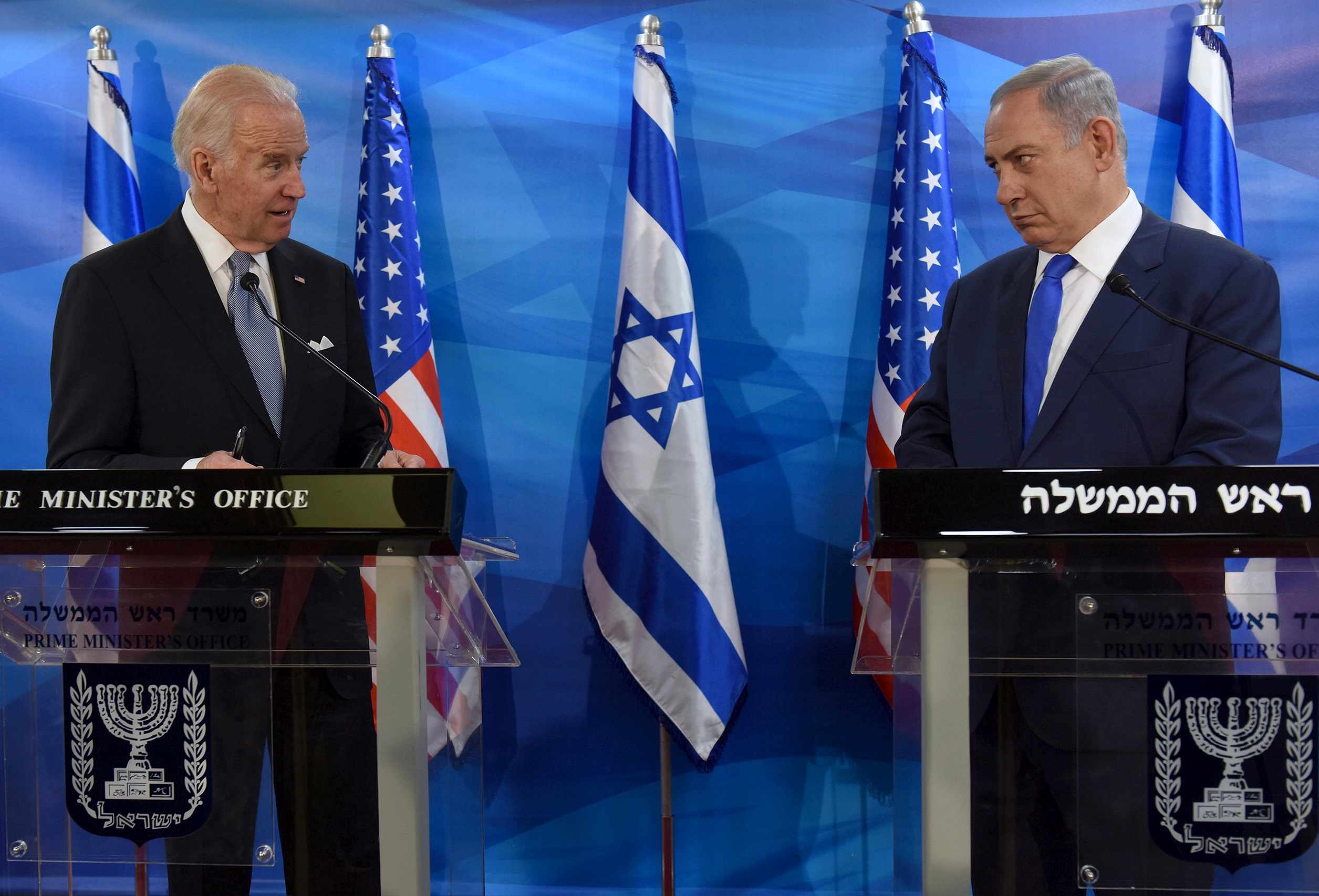Publications
INSS Insight No. 1816, January 18, 2024
Hamas leaders in the Gaza Strip monitor developments in Israel closely, while weighing and refining the organization’s suspension and attrition strategy. Their goal is to bring an end to the war while ensuring the survival of Hamas as both a military and governmental entity within the Gaza Strip; that to them would be the essence of victory. The more optimistic the Hamas leadership becomes, the less inclined it is to demonstrate flexibility or consider proposals that could potentially end the war, signaling the demise of their military and governmental presence in the Gaza Strip. This perceived triumph for Hamas would signify entrenchment of a troublesome situation not just in the Gaza Strip, but across all fronts of the resistance axis against Israel in an effort orchestrated by Iran. This strategy poses a serious challenge to Israel, creating a persistent war of attrition and hindering Israel’s ability to realize its sovereignty and secure its civilian population in communities along its borders. Therefore, it is imperative that Israel thwart Hamas’ strategy and dismantle its capabilities.
After over 100 days of war with Hamas in the Gaza Strip, Israel’s challenges in achieving the war’s stated goals, namely, the dismantling of the organization's governmental and military capabilities and securing the release of the hostages, is increasingly evident. The disparity between the perceived success of the IDF forces and the growing sense of stagnation in public consciousness, both within Israeli society and in the Israeli and international media, is growing. As time progresses, the stark images of destruction in the Gaza Strip, coupled with reports of Palestinian casualties and injuries, highlight a deteriorating humanitarian situation. This exacerbates international criticism and intensifies United States pressure on Israel to conclude the hostilities in their current form.
In tandem, there is escalating concern regarding the wellbeing and survival of the hostages, which magnifies public pressure on both military and political leaders to secure their release "at any price." On the other hand, the political leadership's steadfast commitment to continue the military campaign, aimed at dismantling Hamas' infrastructure and leveraging a more favorable deal for the hostages' release, has spawned a growing divide between the government and a significant segment of the public. This segment overwhelmingly supports the immediate release of the hostages "at any price," even if it means postponing the goal of toppling Hamas.
The conduct and decisions of the Israeli government are transparent to Hamas, as Israel is characterized by its vibrant democracy, active civil society, and free media. The organization’s leaders in the Gaza Strip, particularly Yahya Sinwar, are closely monitoring developments in Israel and continuously refining their suspension and attrition strategy. Their goal is to bring an end to the war while ensuring the survival of Hamas as both a military and governmental entity within the Gaza Strip; to them, this would be the essence of victory. The mere survival of Hamas, despite the severe loss of human life among Gaza Strip residents and extensive damage to civilian infrastructure, is perceived as their victory and Israel's defeat. This fundamental goal joins the aim to secure the release of Palestinian prisoners from Israeli jails.

The Fundamentals of Hamas' Suspension and Attrition Strategy
- Extreme demands in hostage negotiations to wear down Israeli society, magnify tensions between Israel’s civil society and its military and political leadership, and intensify international pressure on Israel.
- Maneuvering between Qatar and Egypt and playing one off against the other. By fostering a competitive dynamic, Hamas improves its prospects for a more favorable deal. This competition not only keeps Israel and the United States engaged, but also fuels American eagerness to broker a deal that leads to the hostages' release. Such a deal would likely culminate in the cessation of hostilities on terms that align closely with Hamas' demands.
- Contacts with leading officials from Fatah and the Palestinian Authority to rally PA support, in the name of national unity, concern for the wellbeing of the Gaza Strip and its population, and support for Hamas and its objectives, particularly regarding how the war should conclude. Jibril Rajoub, a prominent Fatah leader, met recently with Ismail Haniyeh, the head of Hamas' political bureau, and expressed a desire to achieve understandings between Fatah and Hamas regarding the establishment of a unity government dedicated to Gaza's reconstruction, administration of the Palestinian territories, and elections for the presidency and Palestinian Legislative Council.
- Ongoing combat operations, alongside efforts to retain control in the southern Gaza Strip, to project an image of continued presence and command. This strategy includes blocking any attempts by local population groups to establish an alternative presence. Recently, following a reduction in IDF military presence in the northern Gaza Strip, Hamas successfully utilized its emergency committees and security apparatus members (primarily the civilian police) for visible operations in Beit Hanoun and Beit Lahia, as well as in the Jabalia and al-Shati refugee camps. Working in conjunction with local authorities, these groups are involved in debris clearance and provision of water and food supplies. They are also encouraging the return of displaced persons to the northern Gaza Strip. It is certainly possible that Hamas military operatives are assimilated among the returning population, aiming to bolster their military strength against IDF forces in the area.
- Persistent efforts on Iran to broaden the operations of its proxies, thus intensifying the pressure on both Israel and the United States. This approach stems from an awareness of the gradual erosion of Israeli resilience and the growing American apprehension about the war's expansion.
An additional beneficial outcome for Hamas is the escalation of tensions between Israel and Egypt, posing a threat to the cooperation and stability of the ties between them.
Considering the progression of the war and what is reflected in the Israeli and international media, the Hamas leadership in the Gaza Strip is presumably optimistic about the prospects of success and the efficacy of the strategy employed. The more optimistic the Hamas leadership becomes, the less inclined it is to consider proposals that could potentially end the war, signaling the demise of its military and governmental presence in the Gaza Strip.
In this context, the US administration's growing disapproval of Israel's political leadership, particularly Prime Minister Benjamin Netanyahu, plays into Hamas hands and bolsters Hamas’s commitment to its strategy of suspension and attrition. The hope of ending the war on terms favorable to Hamas is further supported by international statements urging Israel to increase humanitarian aid and facilitate the return of displaced persons to the northern Gaza Strip (which is tantamount to a significant withdrawal of IDF forces from the region). In addition, there are calls for the reinstatement of the Palestinian Authority in the Gaza Strip and the resumption of a political process aimed at a two-state resolution.

This development mirrors the discourse in Israel, which Hamas perceives as leverage to pressure the Israeli government into seeking a swift conclusion to the war, without achieving its stated objectives. This narrative supports the perception of Hamas' continued existence as a military and governmental force in the Gaza Strip, a strategic asset that furthers its ambitions in relation to the Palestinian Authority and Fatah, as it aims to assert itself as the leader of the entire Palestinian system.
Any such perceived triumph for Hamas would signify the entrenchment of a problematic reality not just in the Gaza Strip, but across all fronts of the resistance axis in efforts orchestrated by Iran. This confronts Israel with an intolerable challenge of a protracted war of attrition, and difficulty in realizing its sovereignty to effectively secure civilian towns and cities near its borders. Therefore, it is imperative that Israel thwart and disrupt Hamas's strategy of suspension and attrition and ensure the dismantlement of its capabilities as both a military and governmental entity.
Against this background, the following steps should be taken:
- Intensify pressure on Qatar, both directly and through the United States, using unequivocal threats and ultimatums. A widespread global campaign should be launched to expose Qatar's support for terrorist organizations, its financial corruption, and its role as a destabilizing element. This includes Qatar's use of the al-Jazeera network as a media platform serving as a mouthpiece for Hamas and inciting Arab audiences against regional regimes. Increasing pressure on Qatar could lead to actions against Hamas that threaten its funding and secure haven for its leadership, thus shaking its self-confidence.
- Prioritize Egyptian mediation over that of Qatar and enhance coordination with Egypt concerning the end-of-war framework and the treatment of the Philadelphi Route. This is a necessary condition to prevent Hamas' military rearmament.
- Messages to the Israeli public: Expose Hamas' strategic rationale and the risks it entails. Above all, it must be clarified that achieving the war's objectives requires "time and patience," as stated by the Chief of Staff on January 13.
- Block a Fatah-Hamas unity government, as it could serve as a platform for Hamas' resurgence and takeover of the Palestinian system.
- Strengthen coordination with the United States regarding the need to dismantle the Hamas system. Simultaneously, there should be firm opposition to allow displaced persons to return to the northern Gaza Strip. Innovative proposals should be made to improve the humanitarian aid mechanism, such as defining a specific area for controlled humanitarian aid delivery and establishing a “sanctuary” where no military activity is allowed and where residents would be safe.
- Present an organized plan for the “day after,” the creation of an international trusteeship regime led by the United States, including participation from key regional countries, notably Egypt, Saudi Arabia, and the United Arab Emirates. These nations will be integral to the proposed framework, which is part of a new regional architecture grounded in the normalization between Israel and the Arab states, particularly Saudi Arabia. This trusteeship regime is tasked with managing and reconstructing the Gaza Strip, alongside establishing a local technocratic government. Initiated by the trusteeship, this government will gradually receive powers, moving responsibly toward full independence over a minimum period of five years.
At the same time and under the new regional architecture, which offers opportunities and flexibility absent from the Israeli-Palestinian bilateral channel (already ineffective and unable to produce positive results), significant reforms are expected in the Palestinian Authority in the West Bank. The aim is to develop and enhance governance in the territories controlled by the PA. Both Palestinian entities will evolve concurrently, and after approximately five years, based on mutually agreed standards of governmental quality, the potential of forming a Palestinian federation, comprising two districts, will be assessed.
This outline presents a feasible solution in line with the needs of regional countries and the US administration, anchored in the two-state principle. However, it deliberately avoids delving into specific details at this stage, thereby postponing or obviating disputes over key contentious issues between the parties. Concurrently, it addresses the Palestinian call for independence and statehood, contingent upon the effective administration of both Palestinian entities.
The Palestinians will likely initially reject this proposal. Nevertheless, by introducing it, Israel paves the way for Arab states, particularly Saudi Arabia, to progress toward further normalization and reengage in shaping a new regional architecture, disrupted by the October 7 attack and ensuing war. This outline will enable the United States to lead efforts and show readiness to accommodate Saudi Arabia's interest in normalization with Israel, reduce pressure on Israel, and narrow the differences between countries in achieving war objectives. At the same time, this vision establishes a substantial strategic perspective for a difficult, prolonged conflict, and aid in maintaining the unity of Israeli society and its ongoing support for the complex national endeavor.



